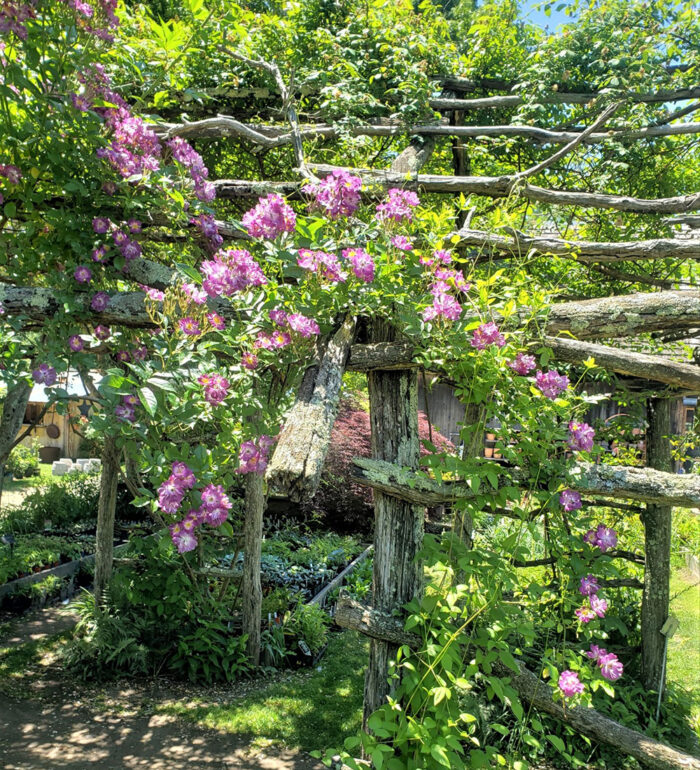
Climbing roses (Rosa spp. and cvs., Zones 3–9) add color, beauty, and vertical interest to your garden. They can transform bare walls, fences, pergolas, tuteurs, and obelisks into showy, bloom-filled tapestries. They’re useful for obscuring unwanted views or unsightly structures, and they’re a fabulous choice when a colorful privacy screen is called for. This growth habit allows them to frame in, define, or otherwise enhance an already lovely landscape. A climbing rose in full bloom becomes an eye-catching, living garden sculpture and stunning focal point. And for those of us with smaller gardens, training a climbing rose vertically or horizontally allows us to maximize the potential of every inch of growing space available.
Conditions and maintenance
An untamed climbing rose can become an overwhelming mass of thorny, hard-to-control greenery. But if you’re equipped with a good pair of pruning shears, a design plan, and knowledge of how to grow and prune it, that same climbing rose can become a valuable addition to your landscape.
Planting
Site your climbing rose in a full-sun location in rich soil. Provide a protective gopher barrier if necessary. Amend with Epsom salts at planting time to encourage healthy root and cane growth. Mulch your newly planted rose with 3 to 4 inches of organic compost to suppress weeds, conserve moisture, and add nutrients as it decomposes. Be sure to also provide an organic, time-release fertilizer. Ensure your growing rose receives regular watering until it has reached its more drought-tolerant maturity.
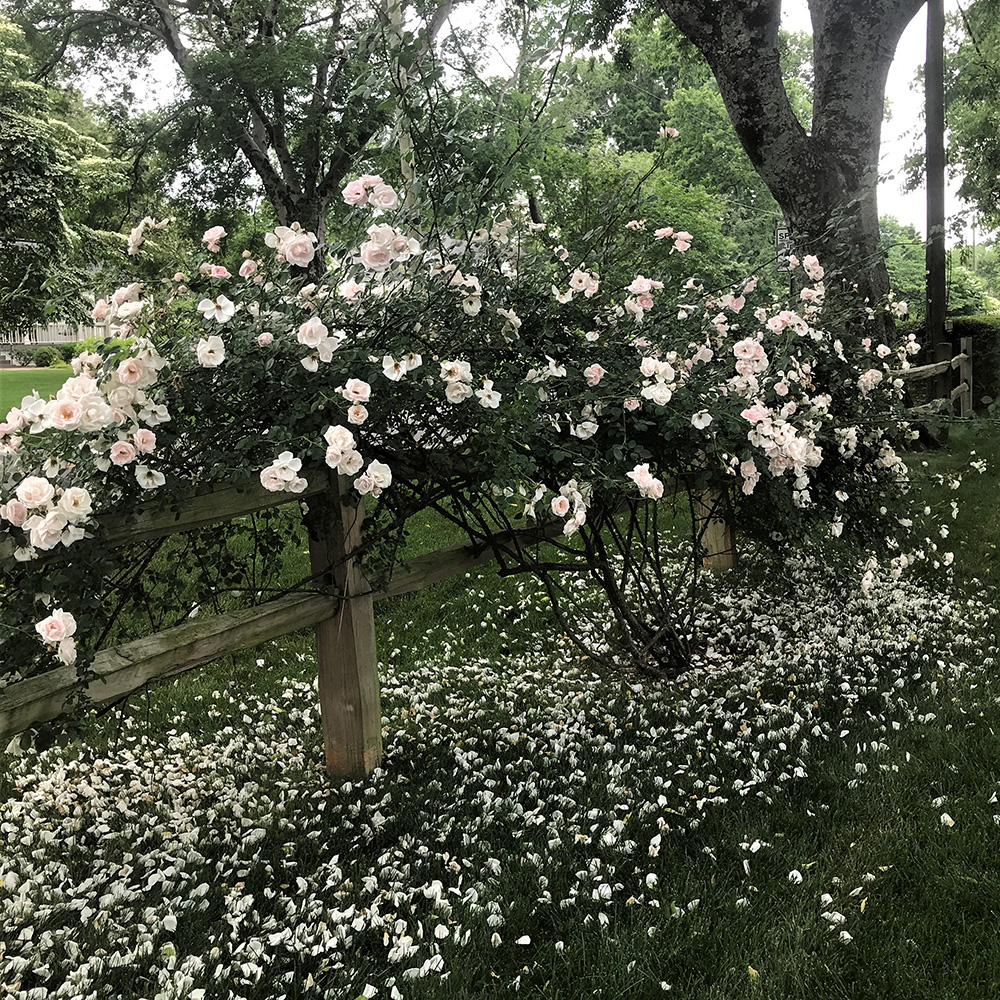
Training
Don’t rush training right away, apart from removing unsightly growth or shoots growing in the wrong direction. Instead, allow your rose to establish a healthy root system and to begin its production of long, arching canes. Then choose the best of these canes to begin training toward your desired design outcome. Keep in mind that throughout your rose’s life, the major upright canes, which are the main structural part of the plant, won’t produce as many blooms as the side shoots. If canes are trained to grow horizontally, they will send out more shoots, thus yielding more flowers. Tie your chosen canes to the rose’s supporting structure, securing each cane as needed. For more information on training climbing roses, read on here.
Pruning
During the growing season, cut back all shoots that have flowered by around two-thirds their length to promote even more blooms. In late winter, cut off dead, crossing, or damaged canes and any canes that don’t fit into your design plan. Tie up new, strong canes to further your design goals or to replace the dead canes. Learn more about pruning climbing roses here.
Feeding
Each spring, feed your climbing rose with a well-balanced, time-release organic fertilizer formulated especially for roses. A handful of Epsom salts plus alfalfa meal (which contains triconatol, encouraging vigorous growth of healthy new canes and foliage) in spring is also helpful, as is side dressing with a layer of fresh compost.
Top-performing varieties
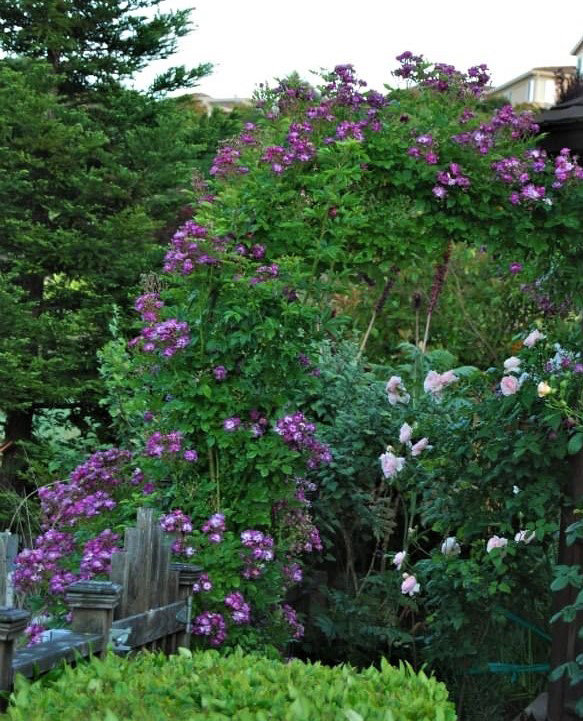
‘Veilchenblau’ rose
R. ‘Veilchenblau’, Zones 8–10
‘Veilchenblau’ rose, also called blue rambling rose, features single, 2-inch-wide blooms in the most unusual shade of soft violet-purple. They are held in enormous clusters of 10 to 20 very fragrant flowers, nearly covering the deep green foliage at peak bloom time. Though ‘Veilchenblau’ is not a repeat bloomer, its unusual color and fast-growing, vigorous, disease-resistant growth make it a rose worth adding to your collection. It will grow 10 to 12 feet tall and wide.
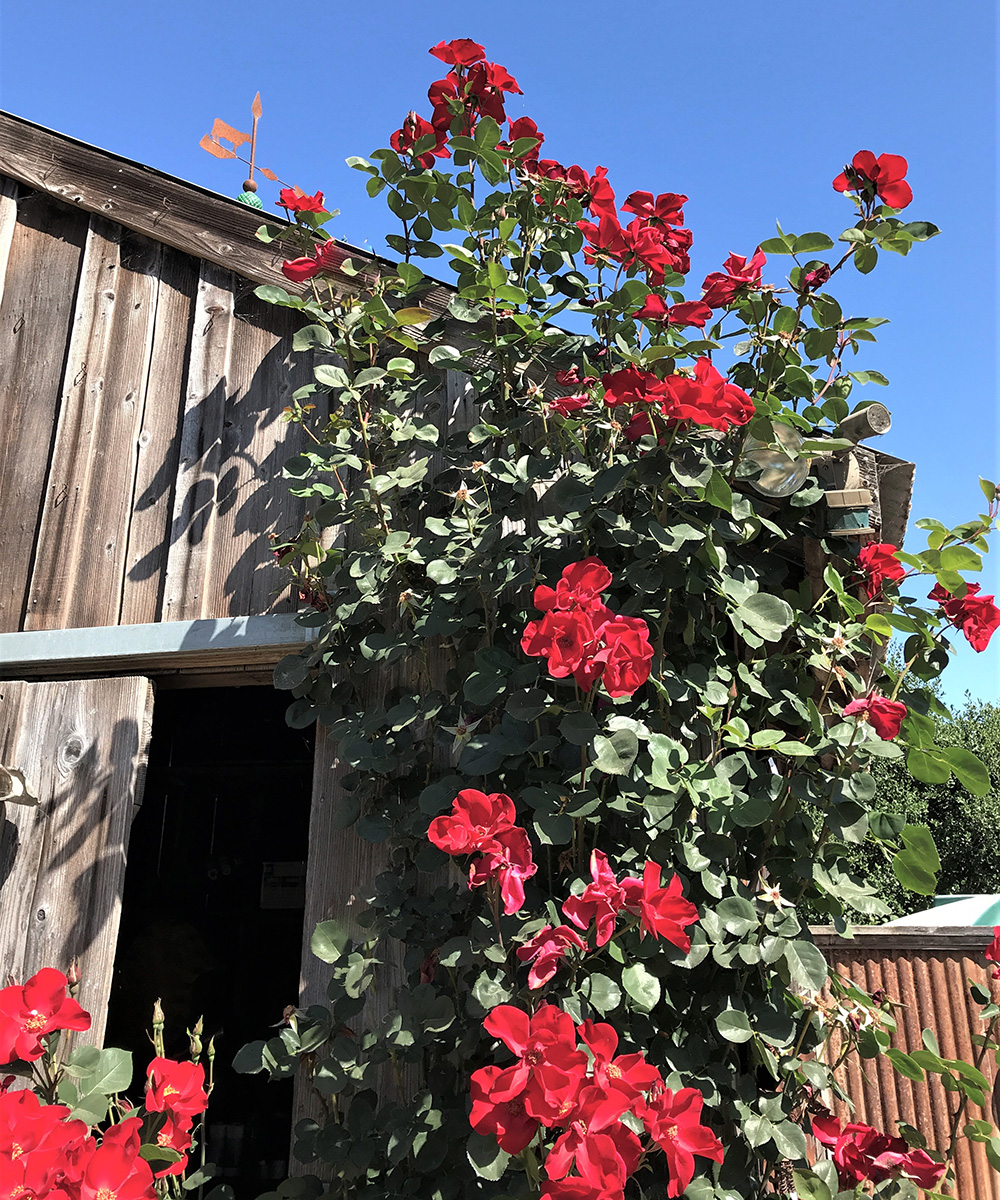
‘Altissimo’ rose
R. ‘Altissimo’, Zones 5–11
‘Altissimo’ rose has big, vibrant fire-engine-red blooms, each centered with a button of golden stamens. These 5-inch-wide flowers look truly spectacular against the bronze-tinted deep green foliage. This vigorous, disease-resistant beauty can reach 15 feet tall and 4 to 6 feet wide and is a heavy bloomer. It produces masses of flowers nonstop from late spring through fall. ‘Altissimo’ is a repeat bloomer with deadheading but creates spectacular rose hips if left alone.
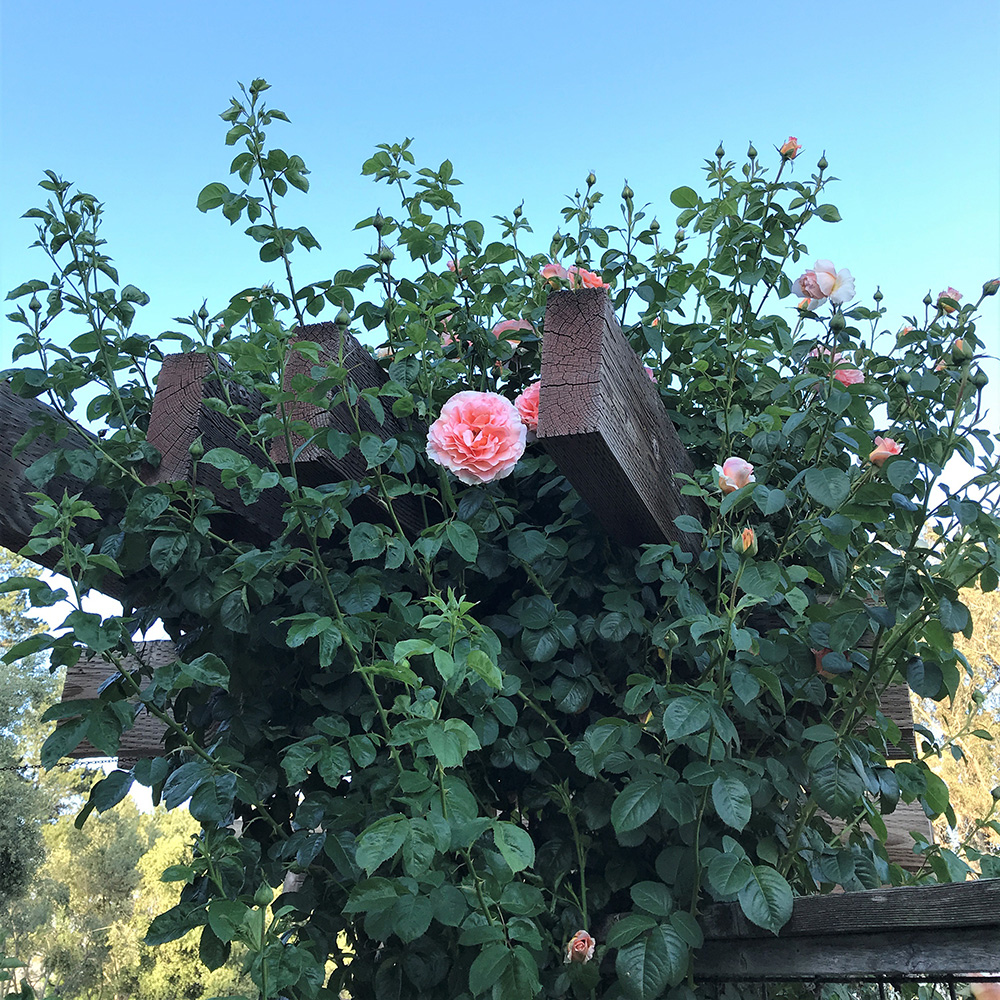
Polka™ rose
R. ‘Meitosier’, Zones 5–10
Also sold as ‘Lord Byron’ rose, Polka™ has many-petaled, voluptuous blooms that flower in a beautiful blend of apricot and peach shades. They perfume the air with a delicious, old-fashioned rosy fragrance. The foliage is disease resistant, leathery, and almost lime green in color. It’s the perfect complement for the bouquet-worthy blooms. Polka™ is a repeat bloomer with a long flowering period. The plant itself can reach 12 feet tall and gets just as wide.
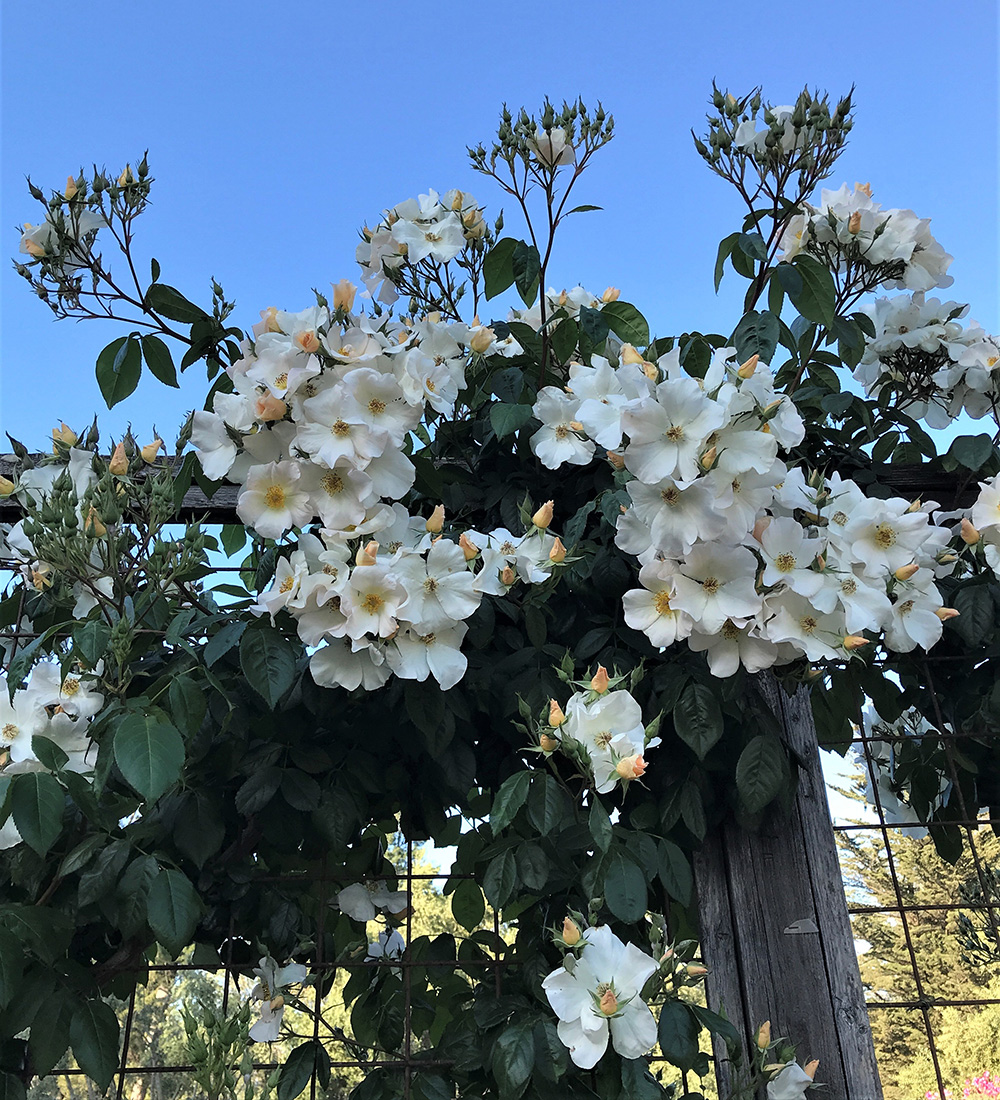
‘Sally Holmes’ rose
R. ‘Sally Holmes’, Zones 6–11
This vigorous rose is nearly always in bloom with masses of apricot-blushed buds that open to huge, round clusters flowers. The blooms are creamy white with golden stamens. Glossy green, disease-resistant foliage makes the perfect backdrop to the dramatic flowers. Deadhead to promote new growth and more flowering. ‘Sally Holmes’ gets 6 to 12 feet tall and 4 to 6 feet wide.
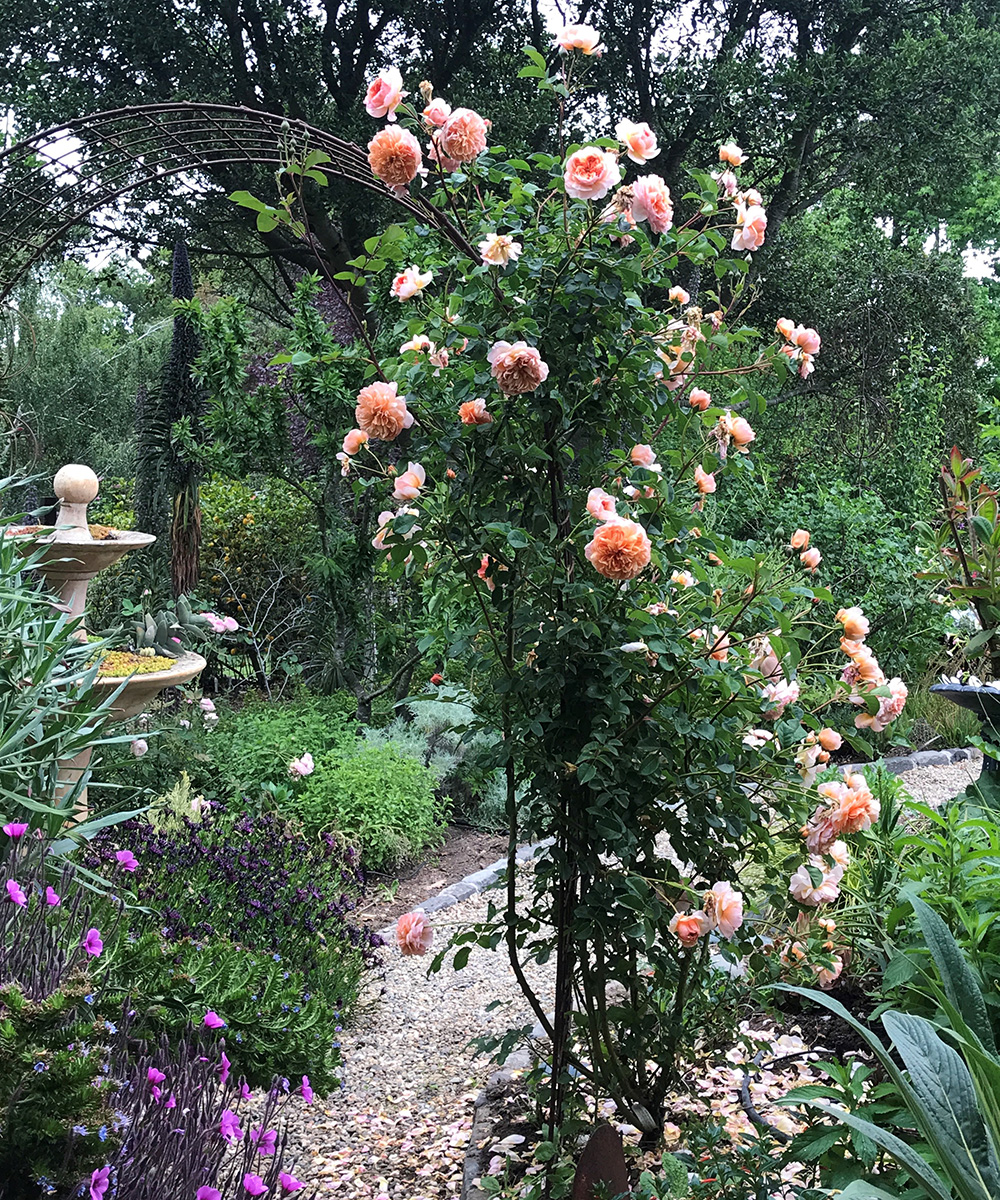
‘Port Sunlight’ rose
R. ‘Port Sunlight’, Zones 5–11
Though not originally classified as a climber, this shrub rose has a lofty upright habit that lends itself perfectly to vertical rose gardening. The new growth of ‘Port Sunlight’ emerges reddish bronze and matures to deep green. Deeply quartered blooms of rich apricot flower from late spring onward. The flowers’ sweet tea fragrance is a bonus. This rose typically stays healthy and grows from 5 to 9 feet tall and 4 to 5 feet wide. With deadheading, it’s a vigorous repeat bloomer through fall.
For more information on rose gardening in Northern California, check out these articles:
—Fionuala Campion is the owner and manager of Cottage Gardens of Petaluma in Petaluma, California.


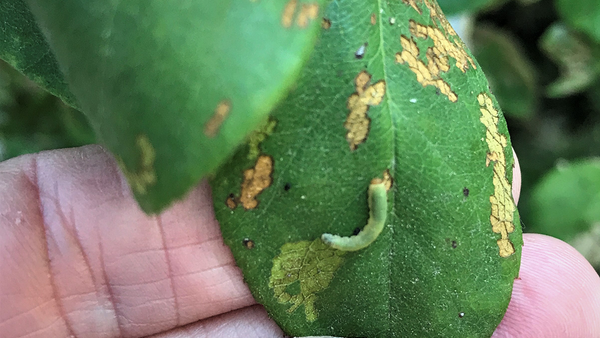
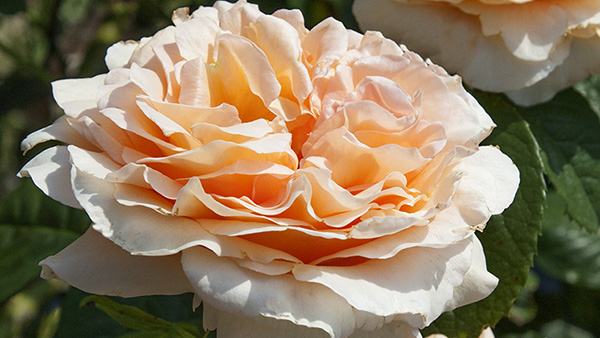
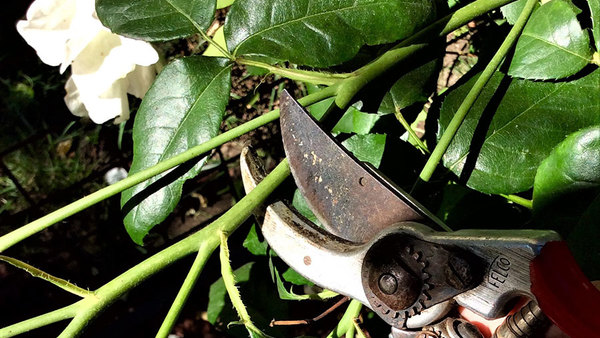
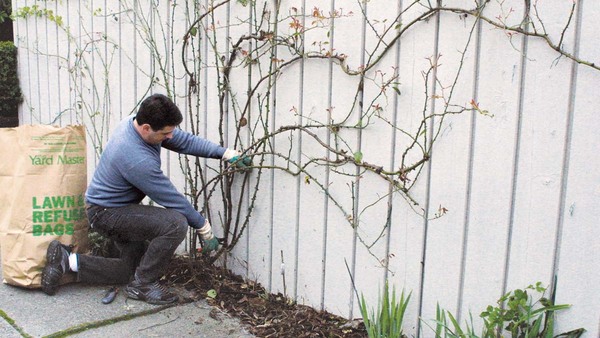












Comments
Log in or create an account to post a comment.
Sign up Log in